
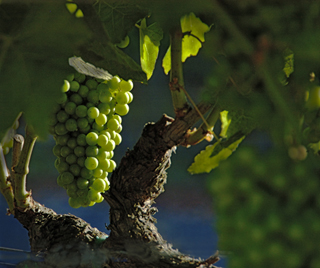
Kissed by fog and cool ocean breezes, the Chardonnay in the Russian River Valley has found an ideal terroir.
Russian River Valley Chardonnay Gets Its Dew
by
Dan Berger
May 19, 2009
 HE Russian River Valley has always been the place where California was going to make the Chardonnay - the place where a Chardonnay purist would want to plant roots and make a white wine of drama.
HE Russian River Valley has always been the place where California was going to make the Chardonnay - the place where a Chardonnay purist would want to plant roots and make a white wine of drama.
And there have been a few stars here over the years, but the region never seemed to develop its reputation for truly distinctive Chardonnay the way it did with Pinot Noir. Today, mention Russian River Valley to people and they think of red wine, not white.
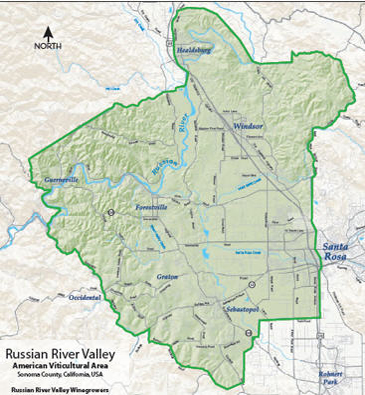 But the fact that this area also makes sensational Riesling, Gewurztraminer, Sauvignon Blanc, and other cool-loving grapes and wines seemed to be proof that Russian River Chardonnay was potentially likely to be better and more distinctive than the superb Chardonnays that we have seen from Santa Barbara, Santa Rita Hills, Santa Maria, Edna Valley, Santa Lucia Highlands, Carneros, Sonoma Coast, Sonoma Valley, Mendocino, Arroyo Seco, and the cooler southern Napa plains.
But the fact that this area also makes sensational Riesling, Gewurztraminer, Sauvignon Blanc, and other cool-loving grapes and wines seemed to be proof that Russian River Chardonnay was potentially likely to be better and more distinctive than the superb Chardonnays that we have seen from Santa Barbara, Santa Rita Hills, Santa Maria, Edna Valley, Santa Lucia Highlands, Carneros, Sonoma Coast, Sonoma Valley, Mendocino, Arroyo Seco, and the cooler southern Napa plains.
Starting with the cooler vintage of 1999, however, wine maker after wine maker began to see that richness and fruit were valid only if you had the right kind of fruit, and some of the above regions had fruit better suited for expansiveness. Russian River could be pushed in the same direction, they knew, but to what end?
About a decade ago, Russian River Chardonnay fruit began to display a distinctive aroma profile that included Meyer lemon, or lemon verbena, plus white peach and nectarine, along with a subtle minerality that contrasted with the pumpkin squash of Santa Barbara, the lime of areas in Santa Lucia Highlands, and the rich flan-like scents of Carneros.
This Russian River Character was not widely discussed by wine lovers - though locally, wine makers knew that it was part of most of their better offerings, notably in the cooler vintages.
“You just know a Russian River Chardonnay when you smell it,” says Rod Berglund, wine maker for Joseph Swan Vineyards, but he notes that, in earlier decades, a lot of the county’s fruit was going to wineries in other regions and blended, so much of the nuance was lost.
Gary Patzwald, wine maker for Rodney Strong Vineyards, who has worked in both Napa and Sonoma counties, says that picking slightly earlier than in other regions seems to
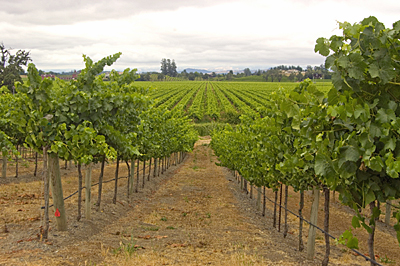
The renowned Sara Lee Vineyards in the Russian River Valley keep their cool with morning and afternoon fog.
“We’re trying to pick at 23 to 24 [degrees Brix], so we can emphasize decent acidity and low pH,” he said. “It’s about balance, and we’re leaning a little more towards the racier end of the spectrum.”
As a result we are seeing more mineral-based scents, less obviousness, and a lighter sort of taste. You might think this is a vintage-related sort of thing, notably because we have noted this trend more in the 2005s, 2006s, and recently released 2007s. And especially since we saw this in the cooler Chardonnays of the 1999 and 2001 vintages.
However, in the next three vintages (2002, 2003, 2004), it was more difficult for wine makers to capture the nuances. So it appears not to be vintage related. “Well, 2005 was a copious vintage, 2006 was small and very cold and rainy with high acid levels, and it was very late, and 2007 was an earlier year and everything was harvested by the third week of September,” said Patzwald.
Dutton-Goldfield’s Dan Goldfield, who works mainly in the even-cooler RRV area of Green Valley, summarized the vintages: “The ’05s were classic, the ’06s had the acid, and ’08 was hot, hot,hot.”
So is there a true test of a vintage?
“I think it’s the ’07s,” says Goldfield. “It was a drought year, with an early bud break and early bloom. That meant that there was ripening of the seeds and skins earlier in the year, and an earlier conversion to phenolic ripening. To some extent there was some shriveling, but it was warm enough so the grapes didn’t have time to metabolize a lot of acid. So the acids remained very good.”
A number of wine makers say they began to notice that nuance was their destiny, rather than richness, in the earlier vintages of the decade, and moved in that
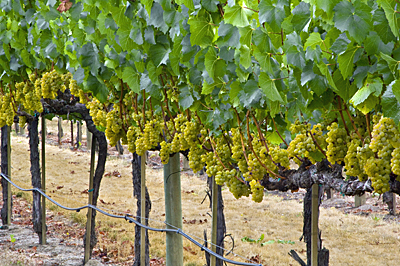 direction deliberately. Guy Davis of Davis Family Vineyards says he has moved more and more toward leaving wine in stainless steel and not using oak. He now uses only one-third new oak, and 30% of the wine doesn’t get barrel aged at all.
direction deliberately. Guy Davis of Davis Family Vineyards says he has moved more and more toward leaving wine in stainless steel and not using oak. He now uses only one-third new oak, and 30% of the wine doesn’t get barrel aged at all.
Patzwald notes he was using only partial malolactic fermentation to retain a vitality and minerality, and that many wine makers are now being convinced that the best way to achieve this lightness and nuance is to harvest grapes at night. “Nighttime picking preserves the fruit. I hate to see fruit sitting in large gondolas in the sun. We started picking at night 10 years ago, and I began to see many other wineries adopt that idea by 2003. And by 2005-2006, even some of the larger growers had begun to do that.”
He credits consultant David Ramey with helping with some of the more detailed in-house tactics that give the wines the right balance between richness and nuance.
A number of local wine makers, including Greg La Follette (Tandem), Terry Adams (Sonoma-Cutrer), Susan Reed (Gary Farrell), David Munksgard (Iron Horse), Hugh Chapelle (Lynmar) and a dozen others are seeking more nuance through various techniques.
Goldfield pinpoints how he viewed the situation: Some years, he notes, temperatures are so cold that the vineyards in the westernmost end of the appellation ripen so slowly it becomes a test just to make a decent wine. When it’s right, RRV Chardonnay has a natural delicacy. “When I think of Santa Maria, for example, I get this mango/tropical fruit aroma, and when I think of Russian River, it’s the lemon, and when I think of Green Valley, I get this distinctive green apple.”
Goldfield adds that many wine makers in the area, who are eager to share their wines with fellow wine makers, are using a lot less oak. “We are all more focused on nuances than we used to be. Even if their percentages [of new oak] haven’t changed appreciably, there are huge differences in the way they used that oak. Now the focus is more on which coopers they use, and which kind of barrel makes the best wine.”
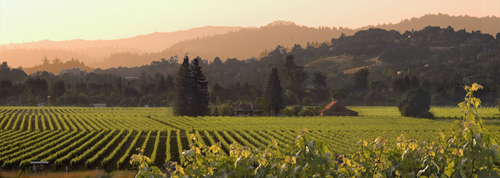 The use of more vineyard designations helps to focus the different wine makers. “Chardonnay reflects the vineyard better t
The use of more vineyard designations helps to focus the different wine makers. “Chardonnay reflects the vineyard better t










 READER FEEDBACK: To post your comments on this story,
READER FEEDBACK: To post your comments on this story,





